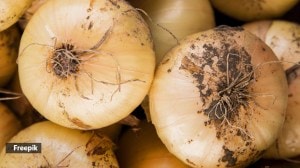Burdens off,for a day
Donkeys get all the attention at this annual fair near Ahmednagar in Maharashtra
Its an open ramp and the beauties strut around nonchalantly,others standing in neat rows. Their masters stand in groups,discussing animatedly,some waving bundles of notes. With each hundred rupee note laid on the floor,the traders debate the physical attributes and utilitarian qualities of their purchase. An annual donkey fair is on at the village of Madhi,51 km from Ahmednagar district,and the beast of burden,the butt of many a joke,reigns supreme for nine days.
The ground at the foot of the ancient Kanifnath temple is filled with the traders exhibiting their donkeys. Some of the donkeys have come dressed for the occasionwith splashes of pink and with large pink spots all over their bodies. In Maharashtra,shepherds,cowherds,members of the Vaghri sub-caste,snake-charmers,jugglers,conjurers and other nomadic tribes trade in donkeys.
With very little documentation on the history of the temple,locals say the donkey fair has been on since the 18th century. Every year,the fair starts in March,during Holi,and lasts for over 15 days. The festival is celebrated in the memory of Saint Kanifnath,believed to be one of the principal preachers and philosophers of the Nath sect.
This years fair proved lucky for traders from Rajasthan as their competitors from Gujarats Kathiawad region didnt turn up. But for Bhima Lal and Ram Lal,it was an opportunity to sell 90 donkeys for a record price of Rs 22,000 each. Our breeds are second best after the Kathiawadis. Buyers are ready to pay a good price if the donkey is well fed and looks good, says Bhim Lal,while the beasts saunter around him. The group from Rajasthan had come with over 150 white donkeys this year and sold all of them.
Like Bhim Lal,thousands of traders,all from nomadic tribes from far-flung areas of Maharashtra and neighbouring states like Gujarat,Madhya Pradesh and Rajasthan,converge at this unique fair to buy and sell donkeys.
Another trader,who demanded Rs 90,000 for his white hybrid donkey,returned home without selling any of his donkeys. No one could appreciate the efficiency of the breed I came here with. I would rather wait for another year than settle for anything less than the animals worth, says Lahu Jadhav from Jamkhed village in Ahmednagar.
Like with any such display of beauty,there is a touch of discrimination here too. A donkeys worth cant be judged by how attractive it is. But the trade is all about exhibiting and selling donkeys. Small donkeys which are as efficient,or even better,than the rich breed get sidelined,just because they dont attract the buyer. I am returning home with 15 of the 32 donkeys I brought to the fair, says 35-year old Salim Madari,a snake charmer who turned donkey trader.
I bought 27 donkeys early last year,all between Rs 2,000 and Rs 4,000. I made a decent profit with my finest donkey that I sold for Rs 10,000. I am yet to get a good offer for the remaining 10 of them, says 42-year-old trader Sukhdev Hari Gaikwad,a nomad from the Kaikadi community.
But this years fair wasnt as well attended as those of previous years. Until a few years ago,over 2,500 donkeys would be sold at the fair,traders say. This year,the numbers have come down by half.
Prof Ramnath Chavan from Pune University,who has been studying the tribes for past three decades,says the lackluster response to the fair this year could be because of the ban on sand dredging and a decrease in the demand for donkeys in brick-manufacturing units. With the advent of better roads and cheap transport,donkeys have been virtually driven off the roads, he says,adding that the dip in demand for the donkeys has forced many traditional traders to look for alternative professions.



- 01
- 02
- 03
- 04
- 05




























